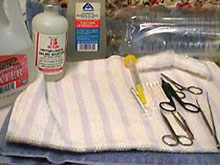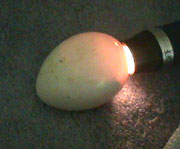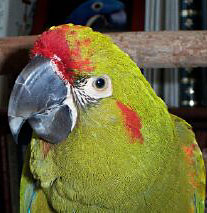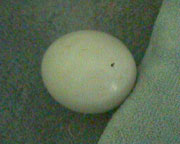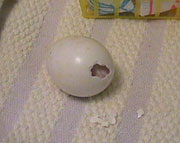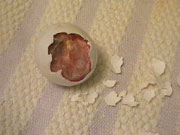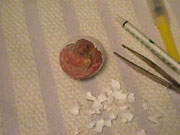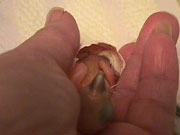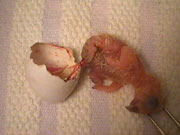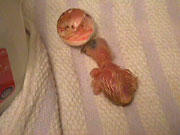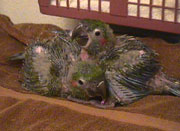![]() Assisted Hatch of a Red-Fronted Macaw Egg
Assisted Hatch of a Red-Fronted Macaw Egg
It takes a combination of understanding the physiology of the hatch, keen instincts and great patience to assist in the hatching of a chick.
Most hatches progress normally. The incubation period in psittacines varies by a few days from species to species and in the Red Fronted Macaw is about 25 days. The chick should be in the normal position for hatching by this time with its head in the larger, blunt end of the egg where the air cell is also located. The air cell begins to expand and extend down one side of the egg in preparation for hatching. This process is called draw down and can often be visualized by careful candling.
|
Jeri has over 20 years of experience breeding and raising parrots. She is very active with the American Federation of Aviculture, having served as Northwest Regional Vice-president and currently as AFA Washington state coordinator/legislative liaison. She is twice past president and current board member of the Northwest Exotic Bird Society and a regular speaker and lecturer at other regional bird clubs and associations. In addition, she has for many years given generously and freely of her knowledge and assistance on a multitude of bird related Internet mail lists and bulletin boards. |
When draw down is complete the air cell occupies about 20-30% of the egg and an increase in the chick's plasma CO2 stimulates it to pip through the chorioallantoic membrane separating it from the air cell. The chick's lungs now become functional as it breathes air from the air cell. Once more, rising CO2 in the air cell stimulates the strong pipping muscles in the chick's neck to spasm and knock its egg tooth against the shell of the egg, causing a external pip.
The time from the first external pip until the chick is completely free of the egg varies among species. In the Red-Fronted Macaw it can take from 24-48 hours. The period between internal and external pip and the period after, as the chick laboriously makes its way free of the shell, is when hatch problems may arise. Most of these problems are due to malposition in the egg. But it is often hard to differentiate between a chick in trouble and one normally working hard to hatch. In addition, intervention into a normal hatch may slow the process down and do harm. It takes careful, patient observation of the chick's movements and sounds to determine the difference.
This is where science, instinct and experience combine to tell the human caretaker when to leave the chick on its own or when to assist it.
The photo journal below follows the assisted hatch of a Red-Fronted Macaw by Jeri Wright. Jeri is an experienced and talented breeder, who's expertise and patience brought this little chick through to a successful hatch.
The first egg went into draw down at 5:02 PM and was officially called hatched the next day at 10:14 PM when the umbilicus was dried enough to detach from the shell. Twenty nine hours of patient, careful chipping away at the shell, while keeping the chick's tissues hydrated and avoiding vital blood vessels. The second egg (not pictured here) went into draw down as soon as the first chick was clear of the shell and hatched two days later, also with assistance.
Click on the pictures to bring up a larger view.
HEALTH |
BASIC CARE | ILLNESS AND INJURY | SYSTEMS |
FEATHER PROJECT | TAMBOPATA | VAL | LINKS
AVIAN VET | CHECK-UP | DROPPINGS | DIAGNOSTICS | EMERGENCIES | COMMON
INJURIES | CPR | WEST NILE VIRUS | IMMUNE | REPRODUCTION
DIET | ENVIRONMENT
© kgsmith 2011
No content may be used or reproduced without the author's written permission
DO NO HARM

